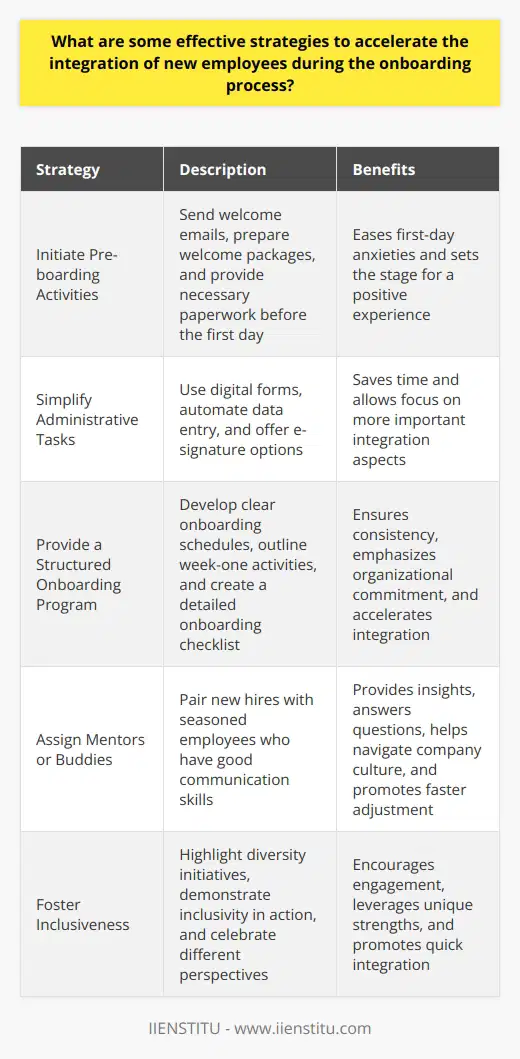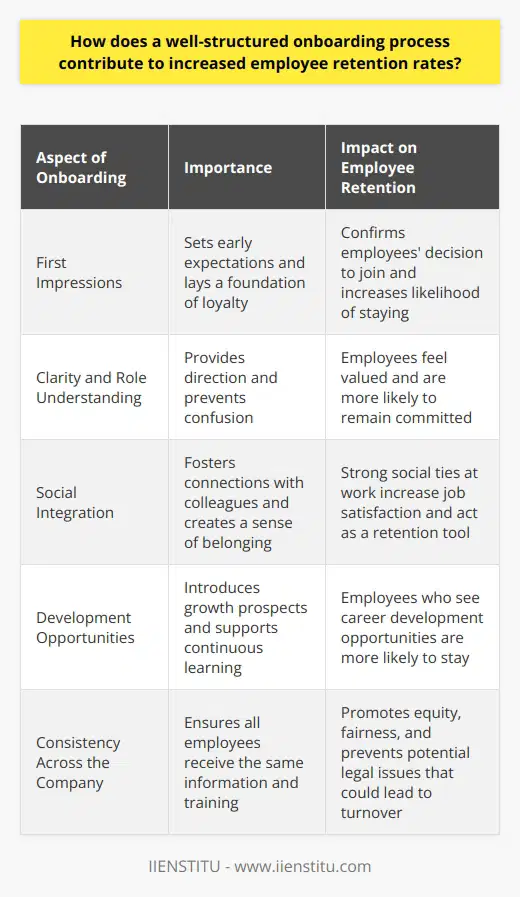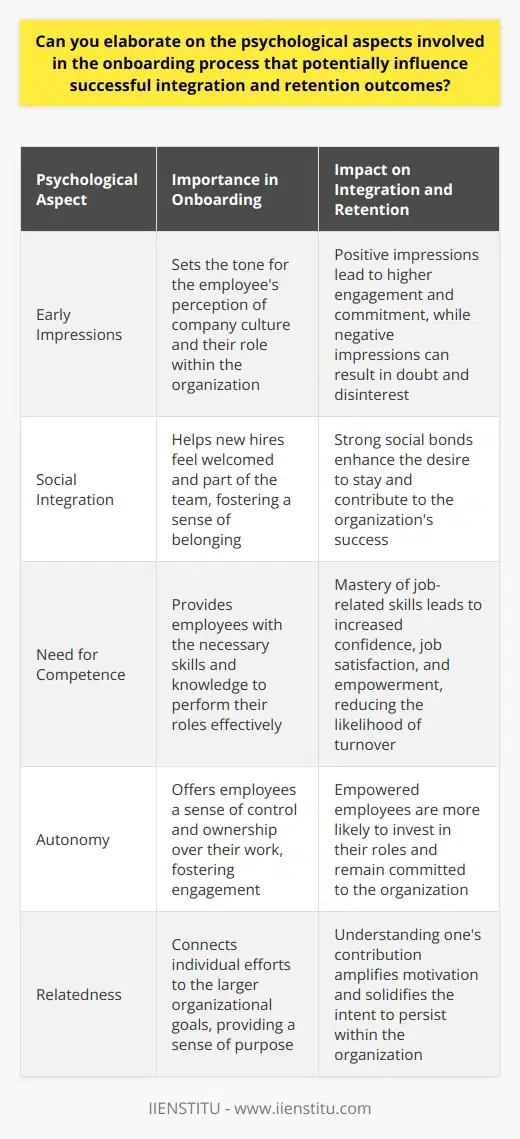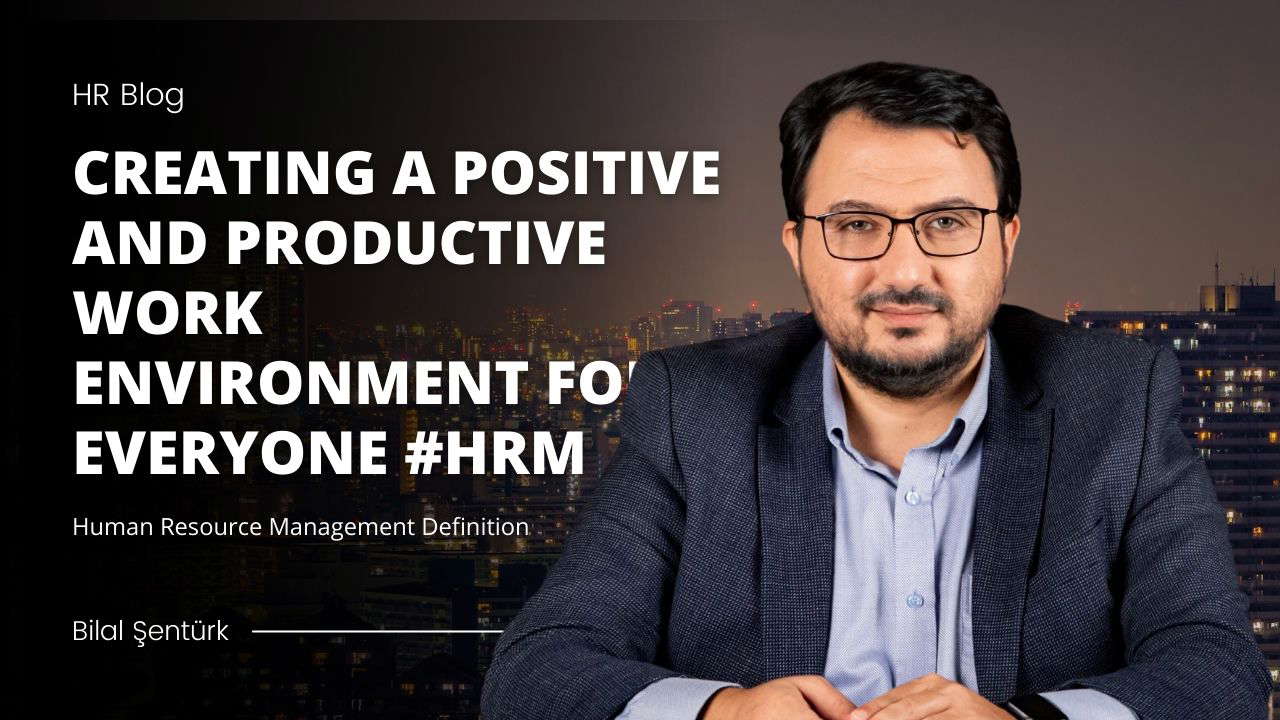
In an era where the war for talent intensifies, organizations are increasingly recognizing the strategic role of the onboarding process. Effective onboarding is no mere administrative hurdle; it is the linchpin for long-term employment relationships, employee satisfaction, and organizational success. Through integrating recruits into the corporate fabric with savvy, studies suggest a clear trajectory towards enhanced employee retention and overall productivity.
The aim of this article is to elucidate the facets of onboarding that differentiate exceptional workplaces, offering insights backed by robust human resources scholarship and practical expertise. With an emphasis on online courses with certificates that contribute to HR proficiency, the article will explore the depth and breadth of contemporary onboarding strategies.
I. Understanding the Onboarding Process
Onboarding goes beyond the simple orientation of new employees; it involves a comprehensive method to ensure greenhorns assimilate the necessary knowledge, skills, and behaviors to become effective organizational members.
The common muddling of orientation with onboarding merits clarification: orientation is a one-time event focused on procedural acclimation, while onboarding is a series of events extending over months or even the first year of employment, emphasizing holistic integration into the company's ecosystem.
A. Difference between orientation and onboarding
Orientation is often a single day's endeavor, packed with paperwork and basic company policies. Contrastingly, onboarding is a multifaceted, longer-term process that can significantly enrich the newcomer's understanding and internalization of company values. This not only better positions new hires for success but also imbues them with a sense of belonging and purpose from day one.
B. Types of onboarding
Onboarding takes various forms, catering to the unique context of each organization. Formal vs. informal onboarding intertwines structured programs with ad-hoc learning opportunities, respectively. Organizations may also choose between individual vs collective onboarding, with the former tailoring experiences to individual employees and the latter assimilating groups of new hires through shared sessions.
C. Key components of the onboarding process
Preparing for the new hire involves logistical arrangements and stakeholder briefings to pave a smooth entry. The first day activities set the tone for the employee's career, bearing immense weight on their initial impressions. Subsequent orientation and training arm new hires with job-specific tools and knowledge, while integration into the company culture nurtures their alignment with core values and social networks.
D. The role of HR in onboarding
Human resources act as architects of the onboarding journey, constructing each phase to cater to individual and organizational needs. This includes designing bespoke learning modules, orchestrating mentorship programs, and ensuring the connective tissue between different departments remains robust throughout the new employee's acclimation period.
II. Why a Good Onboarding Process is Crucial
The ramifications of onboarding are multifarious, influencing aspects from micro-level job satisfaction to macro-level organizational identity, thus validating its indispensability.
A. Impact on new hire engagement
Well-executed onboarding can substantially boost a new employee's engagement levels, driving them to invest more wholeheartedly in their work and into the company's mission. Engaged employees are more likely to go the extra mile, contributing to a vibrant and collaborative workplace culture.
B. Influence on employee retention
The correlation between onboarding and employee retention is no secret. A watertight onboarding strategy can significantly lower turnover rates, mitigating the disruptive and costly repercussions of high employee churn for businesses of all sizes.
C. Effect on company productivity
Quality onboarding also has a trickle-down effect on company productivity. New hires who are properly integrated adapt quicker, contribute faster, and innovate more, propelling the company towards its strategic goals.
III. Common Challenges in the Onboarding Process
As essential as onboarding is, it comes with its share of encumbrances that can unsettle even the most seasoned HR professionals.
A. Lack of clear onboarding process
A nebulous or non-existent structured onboarding pathway leaves newcomers feeling disenfranchised, often leading to a disoriented start at their new job. This can sprout seeds of discontent or, worse, compel a premature departure.
B. Insufficient resources or tools
Onboarding is resource-intensive, and a scarcity of tools or materials can hamper the process. The absence of appropriate online courses with certificates for skills enhancement, for example, could stunt employee development.
C. Lack of support from superiors or colleagues
A new hire's integration is not solely the HR department's duty. Without coherent support from superiors and colleagues, the onboarding mission can quickly falter, leaving the newcomer stranded in a sea of unfamiliarity.
D. Provide examples of these challenges
For instance, a graduate entering a technology firm may find themselves without clear guidance or a designated colleague to help navigate their initial weeks, causing unnecessary stress and potential disengagement – an example far too common in fast-paced sectors.
IV. Best Practices for an Effective Onboarding Process
In contrast to the challenges, several best practices can be applied to enhance the onboarding experience for new employees.
A. Setting clear expectations
From day one, clarity concerning job roles, performance standards, and company culture is paramount. Transparency sets a solid foundation for new hires to build upon.
B. Assigning a mentor or buddy
The assignment of a workplace mentor or buddy can do wonders for a new employee's confidence and assimilation. This not only humanizes the onboarding process but also ensures there's a go-to person for any arising queries or concerns.
C. Ongoing training and development
Continuous professional development is a cornerstone of employee growth. Including relevant online courses with certificates as part of the advancement path conveys a commitment to employee investment and fosters loyalty.
D. Provide examples of companies with effective onboarding processes
Companies like Zappos and Google have been lauded for their immersive and innovative onboarding programs that combine culture-fitting exercises with extensive training sessions, epitomizing exemplary onboarding practices.
V. The Future of Onboarding
The landscape of employee onboarding is ever-evolving, heavily influenced by technological advancements and changing workforce dynamics.
A. The shift towards digital onboarding
Amidst the surge of remote working arrangements, digital onboarding has ascended as a critical modality. This wave of virtual integration, while challenging, offers new hires access to resources and networks irrespective of their physical location.
B. The role of technology in enhancing the onboarding process
Incorporating technology streamlines the onboarding process, and tools like virtual reality can revolutionize how new hires experience their induction. Virtual Onboarding aids in overcoming geographical constraints, while the utilization of Onboarding Softwares simplifies the administration of the onboarding program, ensuring a smoother transition for new entrants.
An effective onboarding process is indisputably integral to the vibrancy of an organization's workforce. By providing an exhaustive induction and integration plan, companies can catalyze the productivity of their new hires while reinforcing retention.
In an age where talent acquisition and retention are paramount, it behooves dynamic organizations to re-evaluate and refine their onboarding processes continually. As we march into a future textured by digital interfaces and autonomous learning platforms, a human-centric, technology-enabled onboarding strategy can propel organizations to unforeseen heights of workforce sustainability and success.
Frequently Asked Questions
What are some effective strategies to accelerate the integration of new employees during the onboarding process?
Effective Strategies for Accelerating New Employee Integration
Initiate Pre-boarding Activities
Employers often overlook pre-boarding. Yet, it sets the stage for a new hire's experience. Reach out early. Send welcome emails. Prepare thoughtful welcome packages. Include company swag. Provide necessary paperwork before day one. This approach eases first-day anxieties.
Simplify Administrative Tasks
The onboarding process involves tedious tasks. Simplify this with technology. Use digital forms. Automate data entry. Offer e-signature options. These small changes save time. They allow focus on more important integration aspects.
Provide a Structured Onboarding Program
Structure ensures consistency. Develop clear onboarding schedules. Outline week-one activities. Include a mix of learning and social events. Create a detailed onboarding checklist. Assign specific HR personnel to guide new employees. This structure emphasizes organizational commitment.
Facilitate Team Introductions
Early introductions matter. Arrange meet-and-greets with key team members. Use informal settings. Allow for open dialogues. Foster a sense of belonging. Personal connections accelerate integration.
Assign Mentors or Buddies
Peer support is crucial. Pair new hires with seasoned employees. Choose mentors carefully. Ensure they have good communication skills. Mentors provide insights. They answer questions. They help navigate company culture. This buddy system promotes faster adjustment.
Deliver Comprehensive Training
Invest in robust training programs. Focus on role-specific skills. Address companywide procedures. Use varied training methods. Incorporate interactive sessions. Emphasize hands-on learning. Proper training builds confidence. It enables new hires to contribute sooner.
Offer Frequent Feedback
Continuous feedback guides new employees. Conduct regular check-ins. Provide clear, constructive feedback. Celebrate small victories. Encourage questions. This practice fosters improvement. It shows genuine interest in development.
Encourage a Strong Feedback Culture
Beyond offering feedback, encourage new hires to provide their own. Create safe spaces for their perspectives. Value their input. This inclusion can unveil fresh insights. It further propels their integration.
Foster Inclusiveness
An inclusive environment promotes quick integration. Highlight diversity initiatives. Demonstrate inclusivity in action. Celebrate different perspectives. Inclusiveness encourages engagement. It leverages the unique strengths of all employees.
Monitor Progress and Adjust When Necessary
Regularly assess the integration process. Gather feedback from new hires. Analyze onboarding effectiveness. Adjust strategies accordingly. Remain flexible to meet diverse needs. Monitoring ensures that the onboarding process continues to evolve.
By employing these strategies, organizations can significantly improve the speed and efficacy of new employee integration. A thoughtful, streamlined onboarding process not only benefits the new employee but also strengthens the organizational culture and boosts overall productivity.

How does a well-structured onboarding process contribute to increased employee retention rates?
Onboarding and Employee Retention
Onboarding sets the stage for an employee's experience. It is the critical period during which new hires learn about the company, culture, and their role. A well-structured onboarding process can significantly contribute to increased employee retention rates.
First Impressions Matter
Onboarding is the first real impression an employee has. It establishes early expectations. It can also lay a foundation of loyalty. A positive onboarding experience confirms an employee's decision to join.
Clarity and Role Understanding
Clear role definitions are crucial. They give new hires a sense of direction. Clear expectations prevent confusion. Employees feel valued when they understand their contribution.
Social Integration
Social ties at work can increase job satisfaction. Effective onboarding fosters these connections. New hires need to bond with colleagues. It creates a sense of belonging. This bond also acts as a retention tool.
Morale and Engagement
Employee morale improves with a good onboarding experience. It increases job engagement. Engaged employees are less likely to leave. They tend to perform better and stay committed.
Development Opportunities
Onboarding should introduce growth prospects. Employees value continuous learning. Career development is a key retention factor. Knowledge of these opportunities can improve retention.
Supports Company Culture
Onboarding reflects company culture. It clarifies core values. Employees aligned with these values are more likely to stay. They can also become culture ambassadors.
Consistency Across the Company
A structured process ensures consistency. All employees receive the same information and training. It promotes equity and fairness. It can also prevent potential legal issues.
Stress Reduction
Starting a new job is stressful. A structured process can reduce this stress. Less stress leads to better job performance. It results in a happier workforce.
Feedback Mechanisms
Feedback is essential during onboarding. It should be a two-way street. This feedback can help new employees adjust. It also allows for early course corrections.
Long-Term Benefits
The effects of onboarding last beyond the initial period. Employees who experience effective onboarding are likely to have a longer tenure. They are often more productive and more likely to promote the company.
Conclusion
A well-structured onboarding process is an investment. It can pay off in increased employee retention rates. Thoughtful onboarding shows commitment to employee success. It reflects the organization's value of its human capital. This commitment, in turn, fosters employees' commitment to the organization. It sets a positive trajectory for the employer-employee relationship.

Can you elaborate on the psychological aspects involved in the onboarding process that potentially influence successful integration and retention outcomes?
Onboarding Psychology
Early Impressions Matter
Onboarding provides the first taste of company culture. Employees form lasting opinions quickly. First experiences shape engagement levels. Positive initial interactions bolster long-term commitment. Conversely, negative impressions can breed doubt and disinterest.
Social Integration is Key
Humans are social creatures. Onboarding should not alienate. Building relationships is fundamental to onboarding success. Social bonds foster a sense of belonging. They also reinforce the desire to stay.
The Need for Competence
Employees desire to feel capable. Mastery instills confidence. Onboarding should equip new hires with vital skills. Effective training promotes job satisfaction. Competence leads to empowerment. Empowered employees are more likely to stay.
Autonomy is Empowering
Individuals value control over their actions. Onboarding should respect this need. Offering choices can boost engagement. Autonomy encourages personal investment. It reflects trust and respect from the employer.
Relatedness Enhances Commitment
New hires seek connection with their work. They need to see the role's relevance. Understanding one's contribution amplifies motivation. Onboarding must link individual efforts to company goals. This alignment can solidify an employee's intent to persist.
Continuous Support and Feedback
Guidance cannot end abruptly. Ongoing support is critical. It nurtures development and signals commitment. Feedback sustains growth and prevents stagnation. Continuous learning opportunities keep engagement high.
Recognition and Validation
Recognition validates effort and existence. Validating contributions bolsters self-esteem. It also binds employees to their roles. Onboarding should celebrate early milestones. This recognition can motivate and instill loyalty.
Mitigating the Effects of Uncertainty
Change breeds uncertainty. Uncertainty can evoke fear and stress. Onboarding must aim to reduce unknowns. Clarity and transparency underpin security. A secure employee is more inclined to remain.
Conclusion
Onboarding shapes the employee's journey. Each psychological aspect carries weight. Success means addressing these facets sensitively. Holistic onboarding supports both integration and retention. Thus, it serves the individual and the organization alike.



